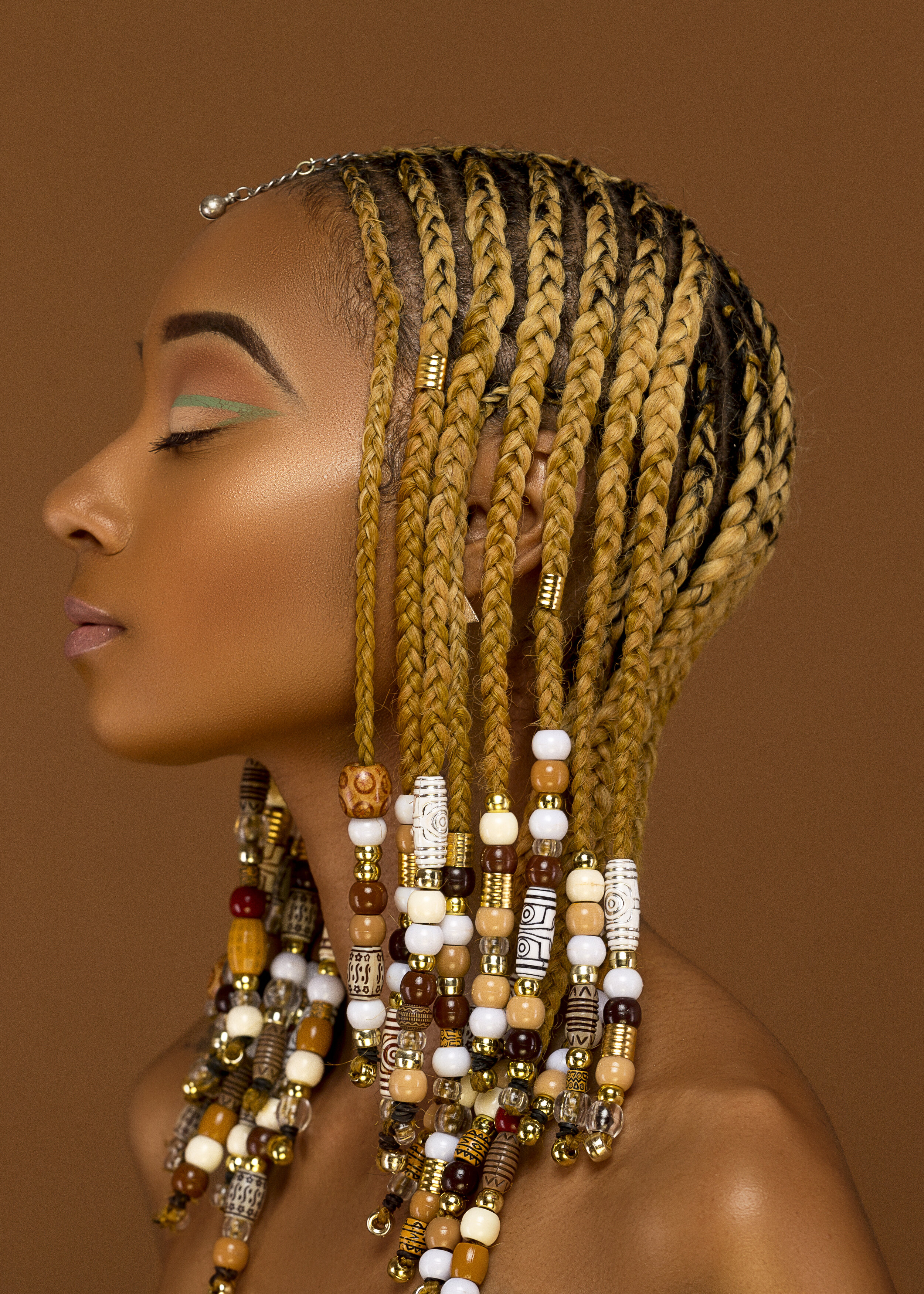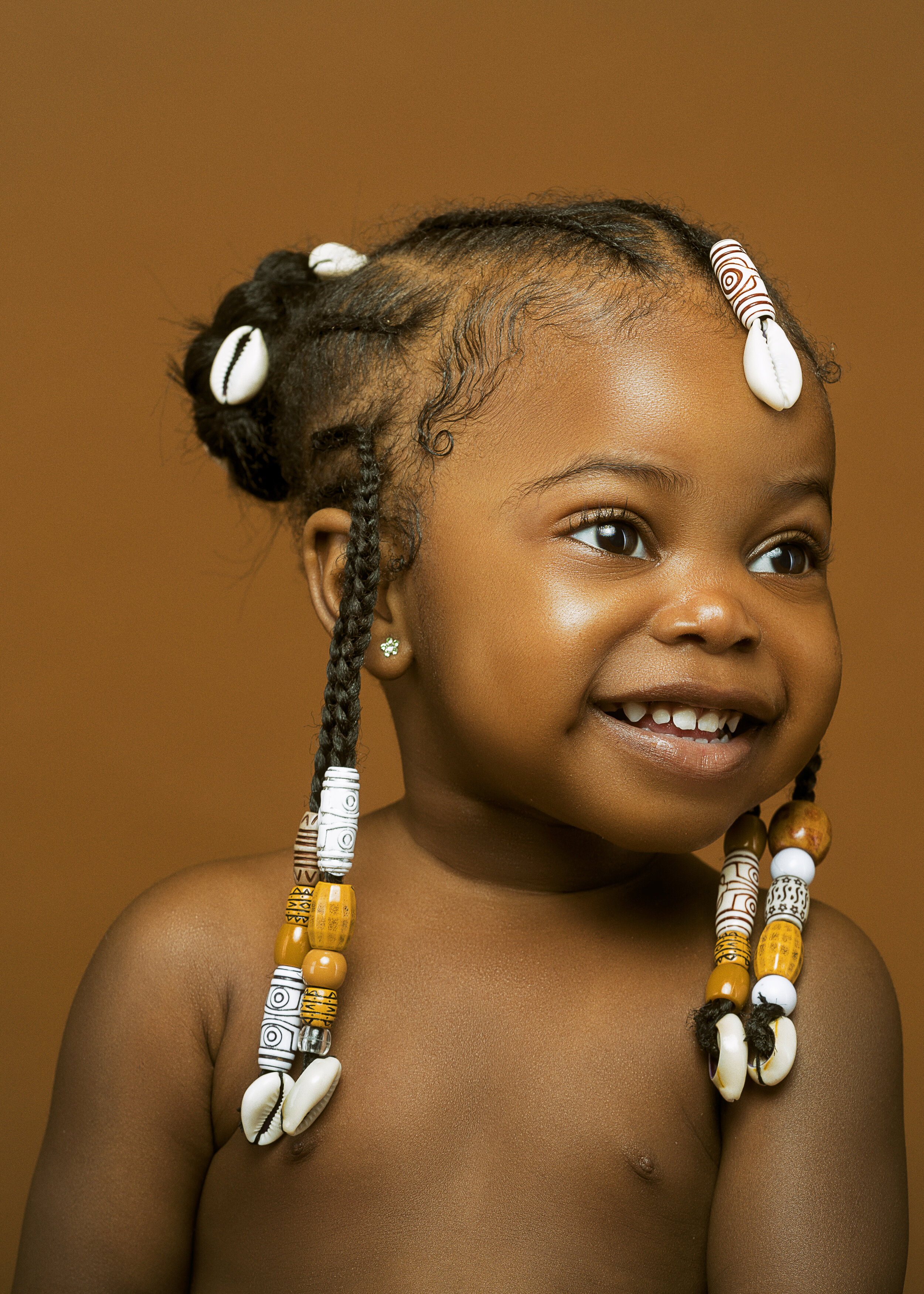Fulani Braids: Cultural Intersectionality or Appropriation?
Images by Ferdinand Nyarko
Intricate designs, ethnic accessories like beads and gold hoops, and double layering are the attributes that are accurately aligned with what most people call ‘Tribal braids.’ The popularity of this hair braiding style abruptly heightened in 2017 and has continued to be a prominent ‘go-to’ protective hairstyle for the summer of 2019. When first hearing the term tribal, one initial thought could be ‘What tribe?’ What familial connection does the Black American community have with the origin of these braids? Personally, it wasn’t until the Kim Kardashian fiasco when she wore the style and wrongfully credited them where outlets started releasing history lessons on the true origin of Tribal braids with the appropriate term being Fulani braids.
Now, Fulani braids originate as a style worn by the Fulani people - an ethnic, primarily Muslim community located among the Sahel zone (where nomadic pastoralism was common) as well as West Africa. Many Fulani people are strongly connected to the history of the American slave trade for over three centuries; assuming this being the case, this could be the reason why the Black American community associates them as tribal given the Fulani people share a common ancestry? Nonetheless, why not keep its original name? While non-Black people are known for being culturally influenced by styles coined in our community, it can be readily argued Black Americans have a history of unconsciously disassociating the origins of certain African cultural practices, especially hair braiding. We’re so swift to call out another group of people for appropriation, yet never take the opportunity to look in the mirror and check ourselves.
As stated in an Unruly article, when Alicia Keys first came out wearing Fulani braids in the 2001 Fallin’ video, Black Americans started referring to them as ‘Alicia Keys braids.’ Fulani people immediately took offense due to the fact the braids were being associated with someone/something other than the heritage it originated from. Fulani braids isn’t the only hairstyle that was coined a different name once inherited by the Black community. Additionally, Cornrows and Box braids (worn by Janet Jackson in the early 90s film Poetic Justice) can be traced back to the origin of Eembuvi braids worn by the Mbalantu women of Nambia in the 1900s. The Eembuvi braids are associated with being initiated into womanhood; the age and status of a woman was indicated by the styling of her braids.
Throughout various tribes of Africa, hair braiding symbolized status, spirituality and age. Historically, when it comes to hair braiding, Black Americans have utilized the practice as a ‘protective style’ and styles were usually popularized after a Black American celebrity wore the style. The same way non-Black women, today, where braiding styles and associate the inspiration to a non-Black celebrity. While the African diaspora can be rooted globally, each ethnicity has discovered its own culture along with its associated practices. The one distinctive practice that keeps us all aligned is hair braiding. With this in mind, collectively, we should all be cognizant of this synergy as an entire people and hold on to the root of the original names. The level of synergy we have with the original origin of hair braiding will really determine whether the cultural practice is a form of intersectionality or appropriation.


